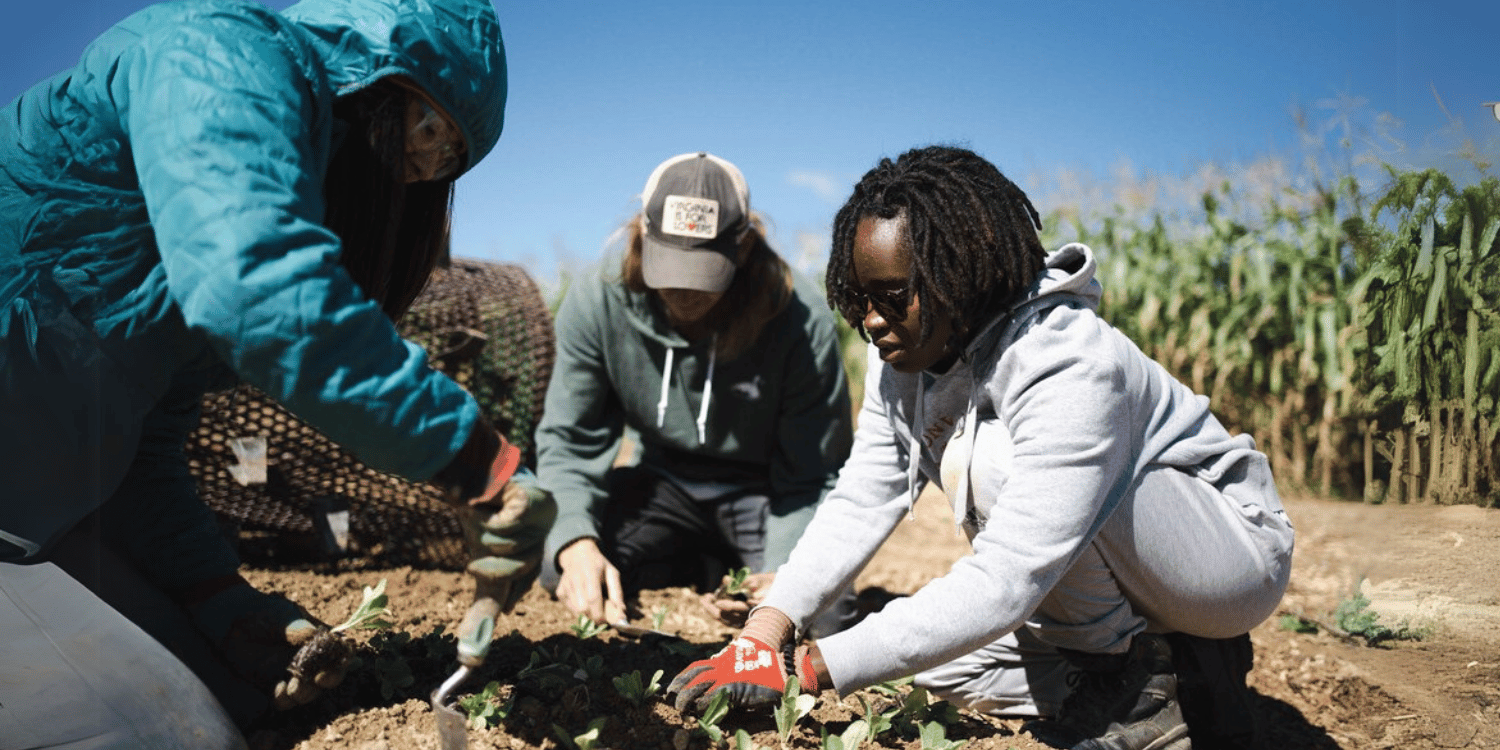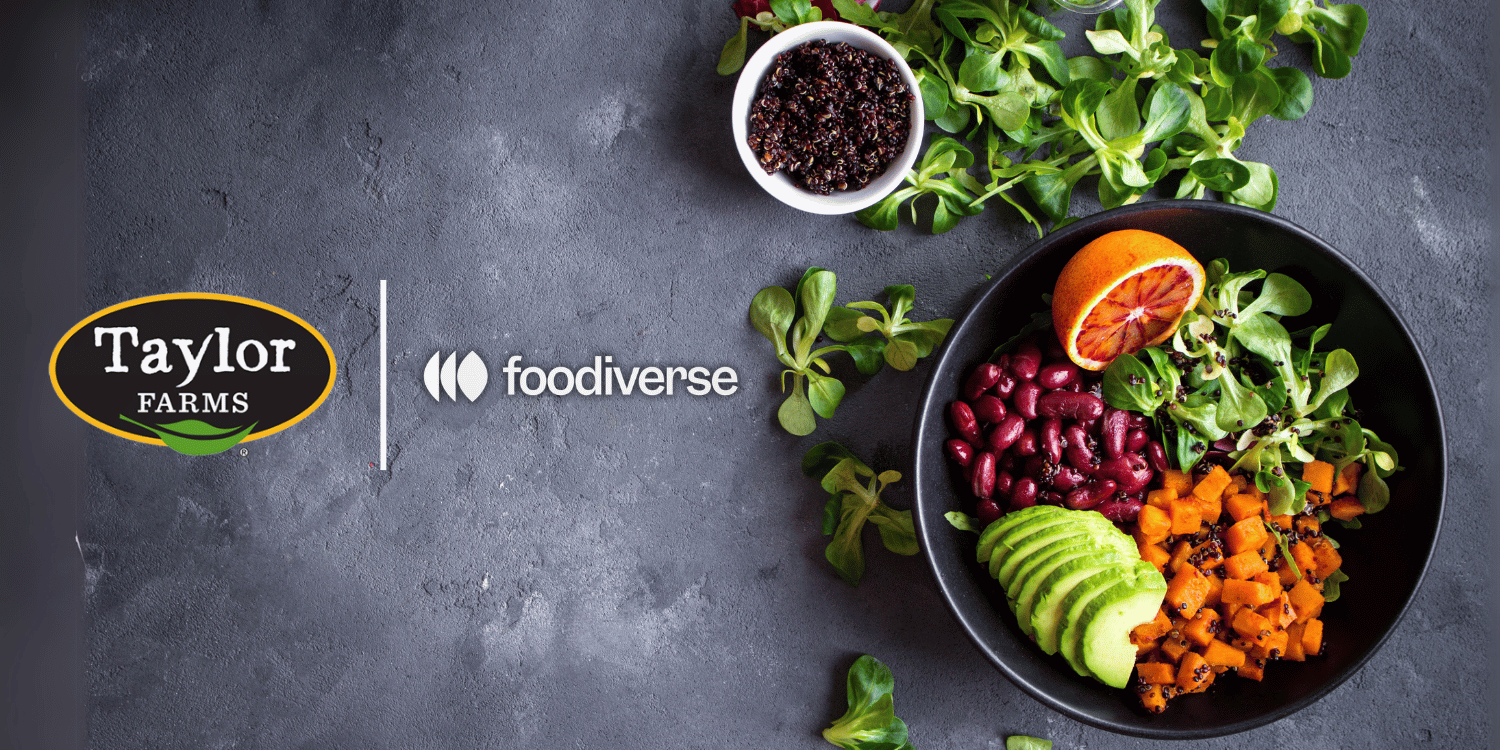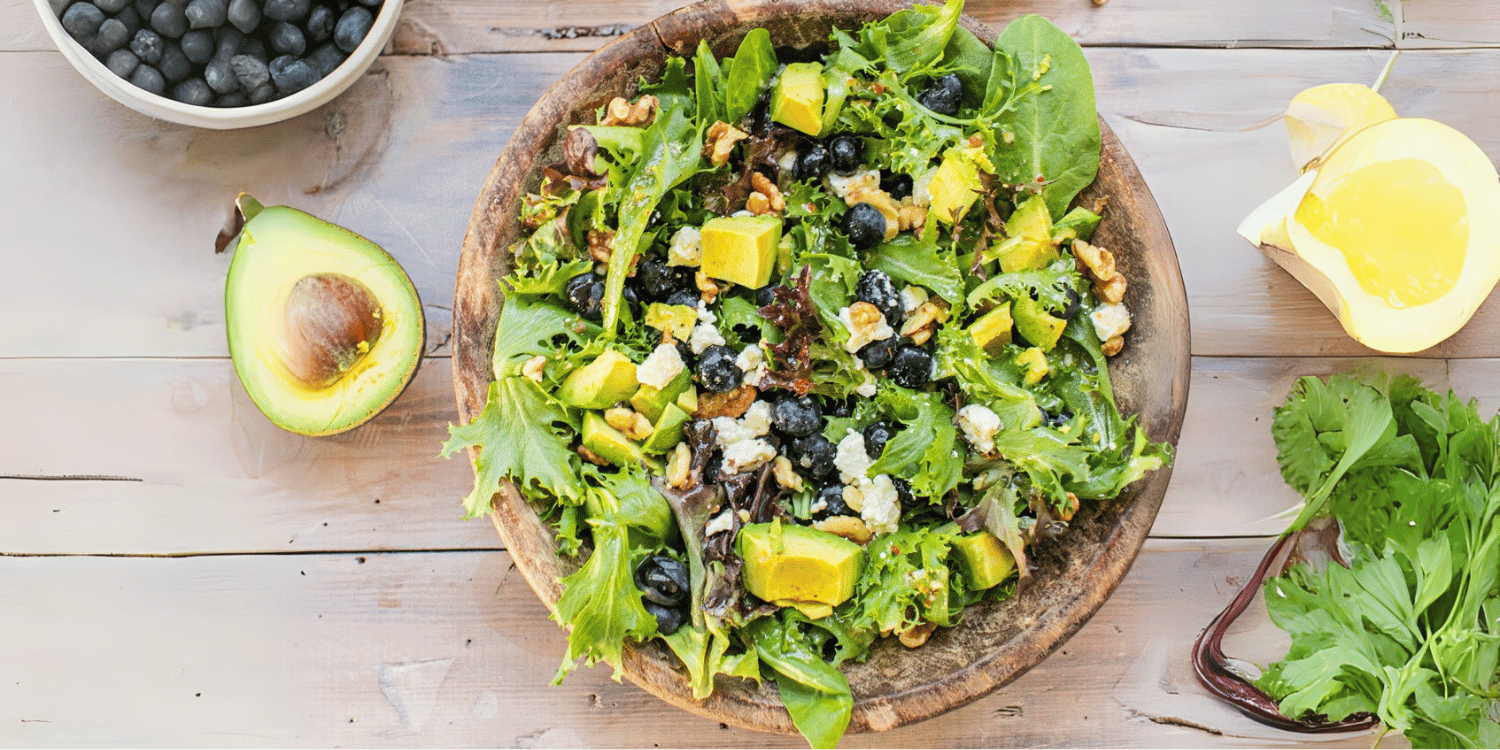Post-Covid world necessitates heightened produce sanitation measures to mitigate foodborne disease risk.
First, strict personal hygiene practices must be adhered to by staff involved in farming, handling, packaging and distribution of produce.
Second, various non-toxic sanitizer options with viricidal properties such as aqueous ozone, UV light and sanitizing wipes should be used in sanitizing the surface of fresh produce.
Additionally, advanced technologies like cold plasma and pulsed light systems may be utilized for decontamination of produce without compromising its nutritional value.
Quality control systems should be strengthened with frequent microbial testing and surveillance to ensure disease control.
Lastly, educational and training programmes for everyone in the produce supply chain can foster consistent adherence to these sanitation practices and disease control measures.
- Discussing importance and techniques of produce sanitation.
- Scrutinizing effectiveness of various sanitization options.
- Exploring innovative sanitization approaches like UV and pulsed light.
- Highlighting the need for quality control and microbial testing.
- Emphasizing training programs for consistent sanitation adherence.
With this established, it becomes clear that there’s more to explore in our discussion on produce sanitation in the post-Covid world.
In the upcoming sections, we will go a step further and dig in into related topics that will enhance your understanding of this critical area. These subsections hold implications for farms, restaurants, supermarkets, and even home kitchens, offering practical insights for various stakeholders.
I am confident that this knowledge will arm you with the tools you need to navigate the complexities and necessities of produce sanitation, especially in this post-Covid era.
Therefore, I invite you to continue reading as we expand on this critical topic. Rest assured, we strive to present intricated details in an easy-to-digest manner.
Contents
- What Is Produce Sanitation?
- Personal Hygiene: Is it Enough?
- How Effective are Sanitizer Options?
- The Use of UV Light in Sanitation
- Can Cold Plasma Improve Produce Hygiene?
- Can Pulsed Light System Decontaminate Produce?
- What Makes a Good Quality Control System?
- Importance of Microbial Testing
- Training Programs: Are They Necessary?
- How to Ensure Consistent Adherence to Sanitation?
- The Bottom Line
What Is Produce Sanitation?
In Short: Produce sanitation refers to the various procedures and protocols implemented to ensure the safety of fruits and vegetables from the field to the table, preventing diseases and ensuring long-term health. This includes prevention, consistent cleaning, proper training, and quality control in all stages of food production and consumption.
When you hear the term Produce Sanitation, what comes to mind? Likely you may conjure images of well-washed fruits and vegetables. More than three sentences here would exceed the maximum, wouldn’t it?
While this image is not inaccurate, there’s far more to the story. Produce Sanitation encompasses a vast array of procedures and protocols put in place to ensure that our produce, from the field to the table, is safe to eat.
Let me tell you, why is this a big deal, you ask? I’m glad you did. It turns out, poor sanitation can lead to a multitude of disease outbreaks, from E.Coli to Salmonella.
Now, I bet you’re wondering what constitutes good produce sanitation. Well, there’s a whole “science” behind it. It involves inspecting, cleaning, and handling to reduce potential health risks. Some might see this as a lot of work.
But I tell you, it’s worth every effort. It’s not just about keeping us safe from immediate foodborne illnesses. Proper sanitation also prevents long-term health issues that may crop up from consuming poorly treated food. Long sentences like this one need their place.
Think about this – ever heard of pesticide residue in your fruit salad? I’m sure we all have. That’s one issue that good Produce Sanitation nips in the bud.
Those in the food industry talk about a few core principles of Produce Sanitation, such as prevention and proper handling. Do you want to know what they are?
Before we dive into these principles, let’s lay out a brief list of them for clarity:
- Prevention: It’s always better to prevent an issue than deal with it after the fact.
- Consistent cleaning: This is more than a one-and-done; it’s a continuous process.
- Proper training: Those handling the produce should be adequately trained on the best practices of sanitation.
- Quality control: Routine checks and balances are important to maintaining a high standard of sanitation.
Now, don’t these principles sound like something we should all get behind? They are all about creating a culture of safety and accountability.
Looking for the real-world implications? Take a look around you. Countless cases of food poisoning and cross-contamination could have been avoided with proper produce sanitation.
Pro Tip: Produce Sanitation encompasses a vast array of procedures and protocols put in place to ensure that our produce, from the field to the table, is safe to eat.
This doesn’t just impact our home kitchens. These principles apply to restaurants, grocers, and even the farms where our produce begins its journey.
I want you to remember, Produce Sanitation is more than a set of rules or procedures. It is an essential part of maintaining the health and safety of everyone who enjoys fresh produce. Moving forward, let’s keep that in mind with every bite of an apple, every slice of a cucumber, and every leaf of lettuce.
Personal Hygiene: Is it Enough?
In Short: Personal hygiene has gained critical significance in the post-Covid world, but its sufficiency in protection against pathogens is under question. Effectiveness, however, lies in the symbiosis of individual and community efforts, including sanitation and disease control strategies, demonstrating personal hygiene as an important element, but not the sole solution.
As we’ve moved deeper into the post-Covid world, our familiar routines of personal hygiene have taken center stage. With a sense of cautiousness, we’ve placed extra importance on habits like washing hands, sanitizing surfaces, and wearing masks.
These routines were once mundane, but now hold critical significance. But the crucial question that arises is – is personal hygiene alone sufficient to keep us safe from pathogens?
Let’s discuss.
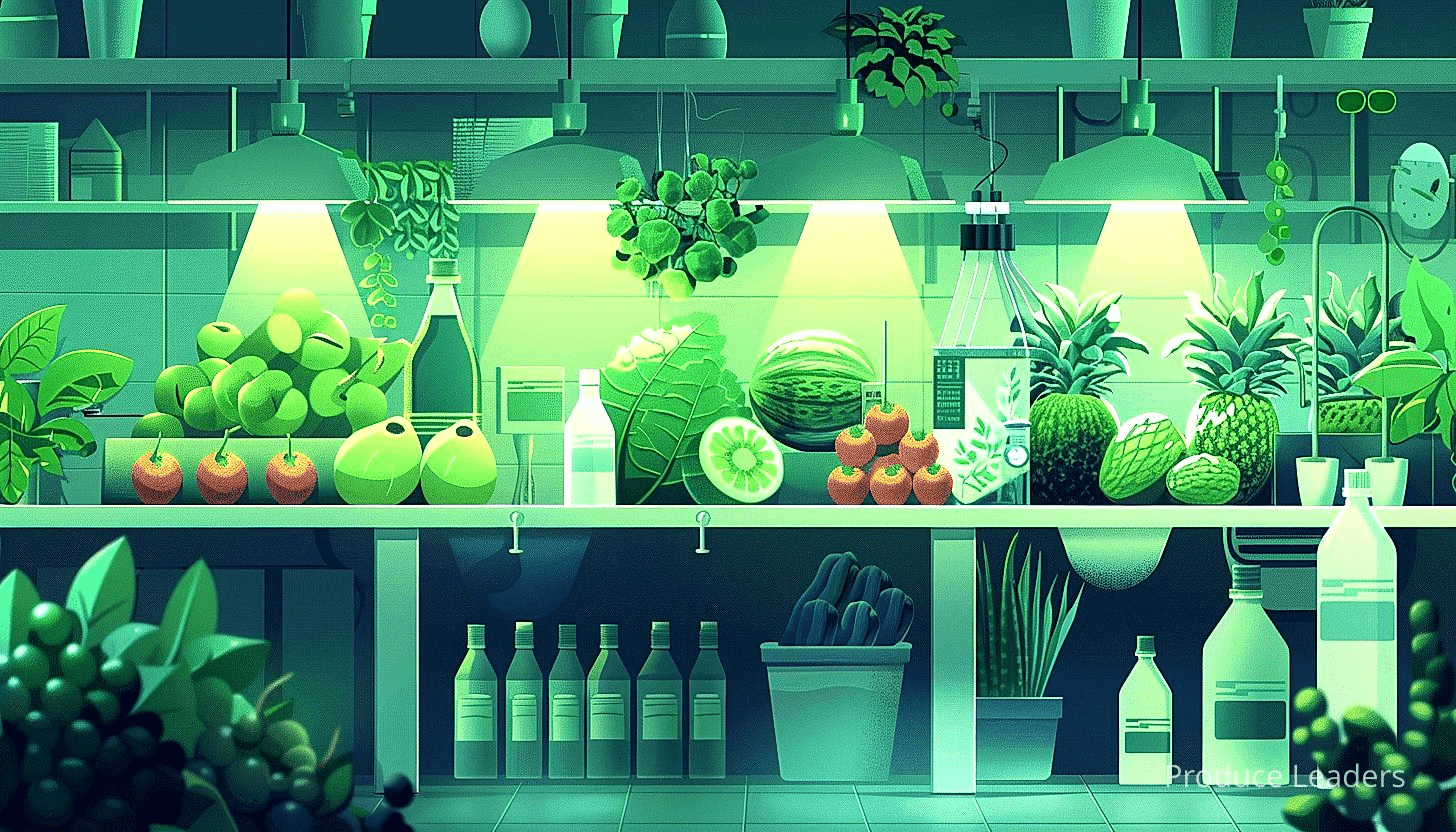
Undeniably, keeping oneself clean is important in controlling the spread of diseases. However, refusing to accept this unassailable fact could be as potent as any microbe.
Considering the survival of some viruses and bacteria on surfaces, sick individuals are merely one aspect of disease control. Maintaining sanitation in fresh produce is equally critical, don’t you think?
Let’s take a moment to consider some fundamental aspects of produce sanitation:
- Cleaning methods – ensuring surfaces, fruits, and vegetables are thoroughly washed with clean, potable water.
- Sourcing – guaranteeing our foods are derived from trusted and safe sources.
- Proper handling and storage – keeping foods at appropriate temperatures, properly sealed and stored.
Now, hold onto the thought – practicing these, doesn’t it provide us with an extra layer of defense? However, depending solely on personal hygiene can lead to a form of complacency.
We must remember, contagions do not discriminate. They won’t bypass a person because he is diligent with his personal hygiene practices. Thus, another question comes to mind – isn’t personal hygiene and sanitation part of a broader narrative?
Indeed, it is a component of a larger story where community hygiene, vaccination, herd immunity, and awareness come into play. Can you envision a safe world without any of these components?
Everyone washing their hands regularly wouldn’t be enough if the community neglects their part, right?
Thus, personal hygiene is a collective, not an individual, effort. There’s no refuting that it’s an essential element in disease control. But that’s just it – an element, not the entire solution.
In reality, it’s about the symbiosis of individual and community efforts. But does your community support and practice responsible personal hygiene and sanitation?
At the end of the day, we must consider the efficacy of personal hygiene within the larger context of social responsibility, public health measures, and disease control strategies. Now, doesn’t that make you reflect on your role in this larger struggle?
How Effective are Sanitizer Options?
In Short: Sanitizers are a crucial tool in our preventive approach against diseases, effectively reducing or killing harmful bacteria on surfaces, including produce. However, they don’t offer complete protection and should be part of broader hygiene routines, as they minimize cross-contamination and potential disease risk, but don’t wholly eliminate it.
With the global familiarity of diseases like Covid-19, the importance of sanitizing everything we consume, especially our produce, has become rather highlighted.
But how much assurance does the use of sanitizers make? After all, isn’t trust the backbone of all worthwhile efforts?
Assessing the effectiveness of sanitizer options requires a measured approach. First, we have to understand the role they play.
Primarily, sanitizers are designed to reduce or kill bacteria and germs on surfaces. They minimize cross contamination and potential diseases.
The ubiquitous nature of bacteria makes it a routine presence on our produce. But does this mean that all bacteria are harmful?
No, not really. A vast majority of bacteria are harmless, and an even more significant subset is beneficial for human health.
Yet, among the forest of harmless bacteria, there are a few dangerous ones like Salmonella, E.coli and Listeria. These are the ones we try to get rid of with sanitizers.
The kill rate is a important factor in assessing effectiveness. The question is, how much around does a sanitizer kill these harmful bacteria?
Let’s talk about some common sanitizer options. In practical application, we have home remedies and commercial alternatives.
We often resort to vinegar and other home remedies. Opinions on their effectiveness, however, vary.
Even so, can commercial alternatives guarantee us a 100% kill rate? Here are some well-regarded options:
Widely available sanitizers available on the market includes:
- Bleach solutions: Quite effective but leave an unpleasant smell or taste on produce.
- Hydrogen Peroxide: A great option every household seems to have but may not kill all bacteria.
- Vodka: Yes, it can be used as a sanitizer. But don’t just rely on it for killing bacteria.
- Commercial vegetable washes: They claim a high kill rate. Can we take their word for it?
The question about a 100% kill rate remains debatable. But one thing is for sure, sanitizers do reduce the chance of disease.
Is it then safe to say sanitizers are the silver bullet in our battle against bacteria on produce? I’m inclined to say partially yes.
Sanitizers are a preventive measure, not a guaranteed cure. They greatly reduce the risk, but they don’t entirely eliminate it
Let me tell you, while we shouldn’t cast our full faith in sanitizers, let’s not discount their contribution in protecting us against potential threats. Isn’t it better to have them than not at all?
At the end of the day, the effectiveness lies in working with them as part of a broader hygiene routine. As often said, it is better to prevent than to cure.
Let me tell you, do sanitizers work? We believe yes, they do. And while they may not offer blanket protection, they play a significant part in keeping us healthy.
Is relying solely on them enough? Perhaps not, but it surely is a important part of our defensive arsenal against diseases.
I want you to remember, every little thing adds up in the fight against disease. Each conscious step taken brings us closer to a healthier post-Covid world.
The Use of UV Light in Sanitation
In Short: UV light, particularly UVC wavelength, has seen increased usage as an efficient sanitizer in response to COVID-19, deactivating viruses and bacteria without harmful effects like its forms UVA and UVB. Its applications now span from water treatment to household appliances, making UV light a promising tool in maintaining sanitary conditions, as long as its powerful nature is used responsibly.
COVID-19 has redefined the sanitation landscape. As we prioritized our health in new ways, we discovered fresh survival mechanisms.
Among these, ultraviolet (UV) light surfaced as a significant player. But what exactly compels us to harness UV for cleanliness?
Primarily, UV light is a proven disinfectant. It’s natural and incredibly efficient.
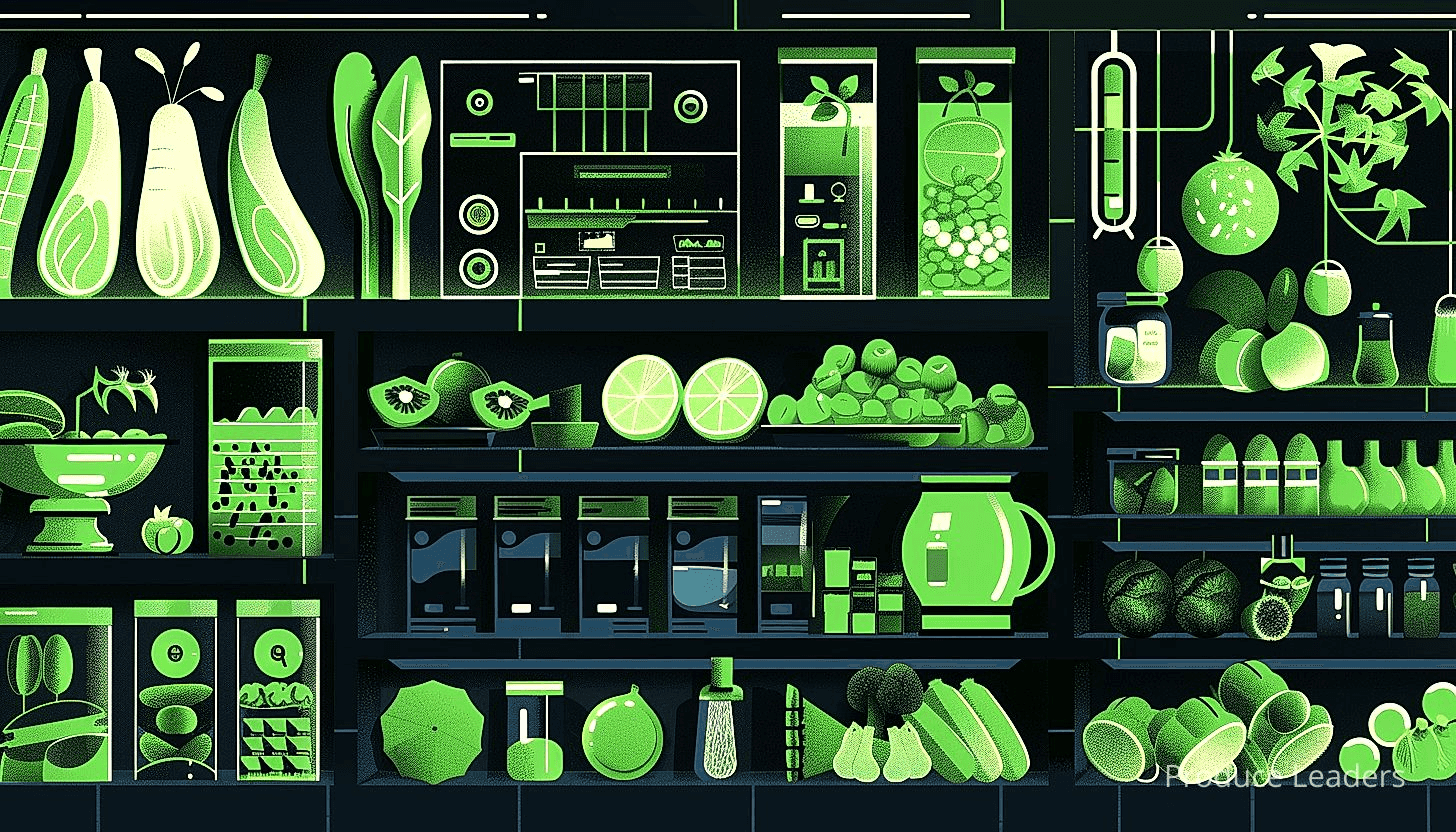
For over a century, we’ve been using it to cleanse our water supply. To kill bacteria and viruses hasn’t it been quite handy?
The COVID-19 pandemic has simply amplified its role to include grocery decontamination.
Now, while an excellent sterilizer, UV does not discriminate. It can harm us as much as it can our microscopic enemies.
Sunburns, after all, remain a testament to the UV radiation from the sun. How then, have we adapted UV for safe, indoor use?
Enter UVC light. This particular wavelength of UV allows its sanitizing properties to be harnessed without the harmful effects of its cousins, UVA and UVB.
UVC can deactivate viruses through a process known as radiation. Nothing short of fascinating, isn’t it?
Admittedly, though, this desensitization of pathogens isn’t perfectly understood. We do know, however, that UV radiation disrupts the DNA or RNA of bacteria or viruses, rendering them harmless.
Isn’t it amazing to think that despite existing for billions of years, the sun still holds secrets that we’re only now starting to uncover?
Through UV light, we’re learning new ways to leverage this ever-present source of light and heat. It’s not just for tanning anymore!
We now see UV light being incorporated in numerous everyday appliances, ensuring that we’re perpetually surrounded by sanitary environments.
Let’s dig in into some examples of how UV light has shaped sanitation practices:
- Mobile disinfection robots in hospitals
- UV-based air purifiers at homes and offices
- Portable UV sanitizers for individual items like phones and keys
- UV incorporation into water treatment plants
While they may seem like gimmicks, UV-based sanitizers do work. The science backs it up.
UV light is astoundingly swift, often purifying environments in seconds. Its absence of chemical residue – a byproduct common to other methods of sanitization, further makes it an attractive option.
Yes, the potential is vast. But with great power comes great responsibility.
We’re doing a fantastic job harnessing UV light for sanitation purposes. However, it’s essential to remember its potency – a fine line differentiates use and abuse.
As we move forward with UV light, we need steady, well-informed decisions.
For, our ultimate goal remains unchanged – a cleaner, safer world.
Can Cold Plasma Improve Produce Hygiene?
In Short: Cold plasma, a mix of charged particles and reactive compounds, offers potential in improving produce hygiene through effective sterilization, tested safety, and its eco-friendly nature. However, challenges in technical aspects, efficacy against all pathogens, and absence of global standardization and regulations require resolution for it to be reliably adopted for large-scale food processing.
When we talk about produce hygiene, what usually comes to mind are traditional methods like washing and scrubbing. But are these methods sufficiently efficient in a post-COVID world?
In recent years, some scientists have suggested a different approach: cold plasma. This is not an entirely new concept, as numerous studies have shown its effectiveness in sterilizing medical instruments and water.
But, what exactly is cold plasma? Simply put, it’s a mix of charged particles and reactive compounds. Used in a controlled environment, it has the ability to destruct certain molecules on contact. It sounds complex, doesn’t it?
Fascinating as it is, the question remains: can it really help with produce hygiene? The encouraging news is that the potential is there.
Our understanding of how cold plasma works is growing, especially in reference to bacteria and viruses. The precise nature of cold plasma allows for sanitation at a molecular level. Impressive, isn’t it?
We can’t ignore some of the potential benefits of this method.
- Effective Sterilization: Cold plasma can inactivate a large variety of microorganisms, including bacteria and viruses.
- Safe : Studies suggest that cold plasma is safe for most types of produce without changing their taste or texture.
- Environmentally Friendly: Unlike many traditional sterilization methods, cold plasma doesn’t need water or generate bio-hazardous waste.
However, these benefits don’t mean that the use of cold plasma in produce sanitation is without its challenges.
For starters, there are the technical aspects. While using cold plasma on smaller scales like, say, sanitizing medical instruments, is manageable, utilizing it for larger operations could prove to be challenging. How can we make this shift?
Furthermore, cold plasma sanitization might not be as effective against all pathogens. Just like with any other method, there are those pathogens that are more resistant.
Then, there is the question of regulation and standardization. At present, most countries do not have established standards for using cold plasma in food processing.
This absence of legal framework raises concerns about the consistent and safe use of the method. What if, in a race to adopt the method, some crucial steps in ensuring its safety and efficacy are missed?
It’s evident that while the potential for improving produce hygiene with cold plasma is significant, some kinks need to be worked out. However, as we gain more understanding and continue to develop the technology, cold plasma could very well become a standard component of produce sanitation in the future.
But even as we anticipate this future, we must engage in serious deliberations and research. These will inform crucial safety and standardization measures which need to be put in place. Cold plasma does look promising, don’t you think?
Can Pulsed Light System Decontaminate Produce?
In Short: The Pulsed Light System harnesses intense bursts of light to effectively eliminate microorganisms and ensure food safety. Being non-thermal and chemical-free, this system has potential, although its effectiveness varies with types of produce and must be combined with other sanitation practices for best results.
In the contemporary world, the need for food safety and cleanliness has never been more pronounced. How then do we assure the public that their food is clean and safe?
The Pulsed Light System has been gaining considerable attention in the food industry. Being a non-thermal disinfection method, it holds great promise, doesn’t it?
This innovative technology harnesses intense bursts of light over a short period. It destroys microorganisms and pathogens effectively, ensuring food safety.
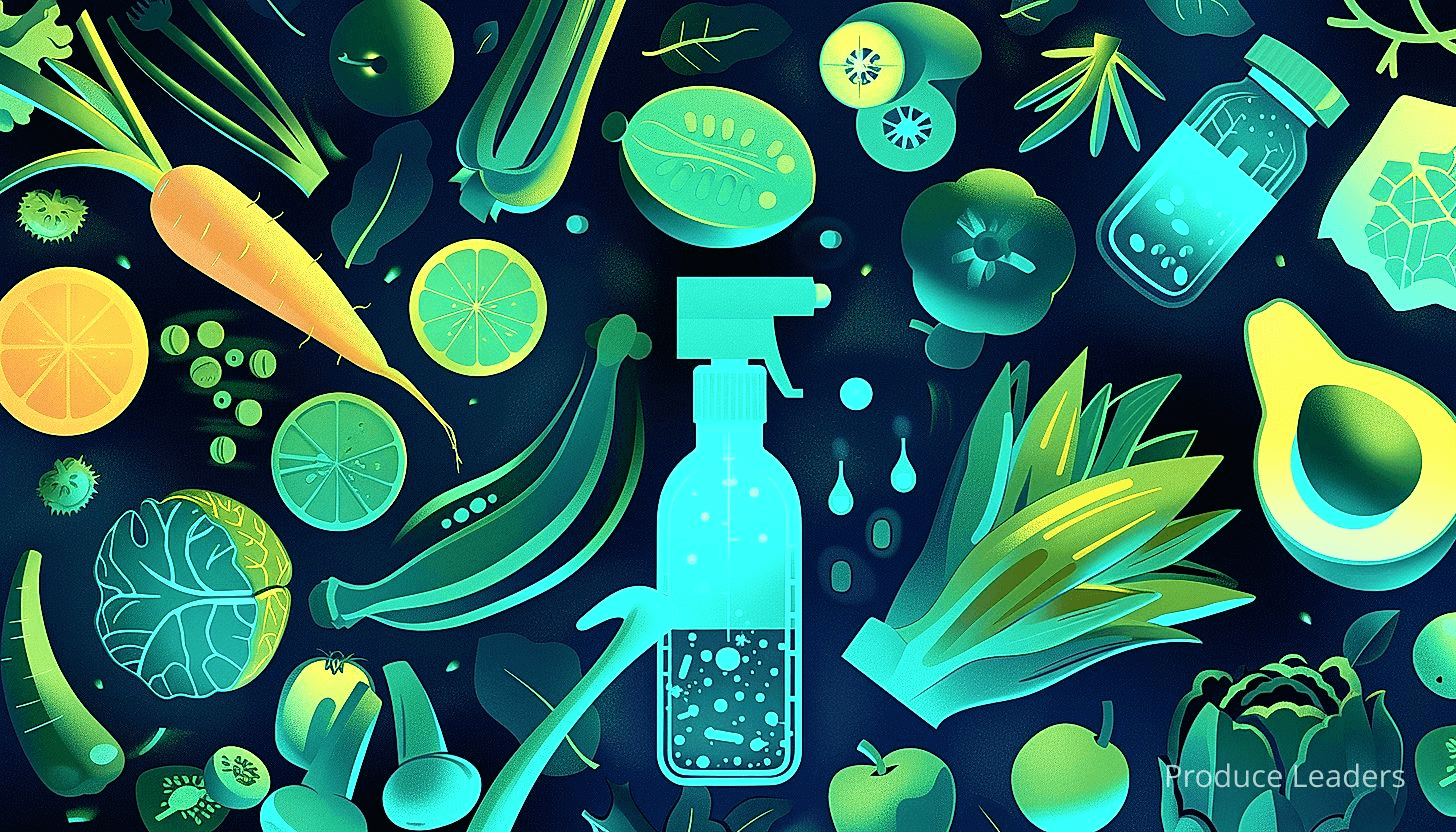
But, one might ask, how is this light produced? The answer lies in xenon lamps which emit an intense light that covers a broad spectrum.
Now, let me touch on the merits of the Pulsed Light System. Here’s a list of some of the key benefits:
- Efficiency: Pulsed Light System offers a high level of decontamination
- Speed: The process is quick, thus not interfering with the pace of production
- Environment Friendly: It doesn’t involve any chemicals, thus posing no risk to the environment
However, the efficacy of the Pulsed Light System isn’t uniform across all types of produce. Factors such as the thickness and texture of the produce can impact the process.
Take the example of root vegetables. The rough exterior can provide crevices where pathogens can hide. Is then pulsed light system effective in such cases?
Well, any food safety measure, including the pulsed light system, is most effective when used in conjunction with other sanitation practices. Wouldn’t you agree?
Even though the system’s ability to decontaminate produce has been proven, one shouldn’t ignore the factor of consumer acceptance. What could happen if consumers reject the notion of their food being sanitized with light?
Ensuring the public is informed and educated about the Pulsed Light System is thus of utmost importance. After all, isn’t public acceptance a crucial factor for any innovation?
The Pulsed Light System indeed has the potential to revolutionize the way food is sanitized. Does this mean that post-Covid world has an effective weapon to ensure food safety?
While it’s a promising tool, let’s not forget that a multifaceted approach is always the key to ensure food safety. Recognize the Pulsed Light System as a part of a bigger picture, might be our best bet, right?
What Makes a Good Quality Control System?
In Short: An effective quality control system hinges on unwavering commitment from all involved, proper training, thorough documentation, and a preventive approach that includes understanding risks, analyzing patterns, and implementing risk-based controls. It should rely on appropriate technology and an integrated system, and is crucial for ensuring process efficiency and maintaining high standards in today’s post-Covid world.
Any high-quality system of control must hinge on unwavering commitment from all parties involved. Does everyone understand the serious implications of slipping standards?
Only with proper training can personnel be in a position to trace and eliminate potential problems. In the post-Covid world, such skills are not a luxury, but a necessity.
Additionally, maintaining adequate documentation is a key tenet to ensuring the successful implementation of standards. This cannot be overstated enough.
What happens when a system diligently follows procedures, only to find an issue at the very end of production? Utilization of a preventive approach, rather than a reactive one, is instrumental in limiting these occurrences.
“But how is this achieved?”, you may wonder. Let’s dive into it.
Many key aspects are involved in adopting a preventive approach:
- Understanding the underlying risk factors inherent in the production process
- Being able to predict potential issues by analyzing patterns in data
- Implementing risk-based preventive controls to mitigate these risks
By installing these measures, a solid groundwork is set for a proactive quality control system.
Another important factor in the success of a quality control system is the utilization of technology. Reliable technology can greatly assist in implementing and maintaining standards, thus, proving itself an indispensable tool.
The type of technology utilized is also of utmost importance. Shouldn’t the technology match the complexity and specifications of the manufacturing process?
I want you to remember, a perfect fit technology doesn’t necessarily equate to the most advanced or the most expensive. It simply needs to serve the particular requirements of your process efficiently.
An integrated system can greatly aid in threat identification. It can assist in intervention before those threats transform into real issues.
Pro Tip: To ensure a successful quality control system, there needs to be unwavering commitment from all parties, proper training for personnel, adequate documentation, utilization of a proactive preventative approach, and the implementation of reliable, suitable technology in an integrated system.
Drawing upon this, it’s clear that having an integrated system in place offers great advantages. It does not limit itself to maintaining quality, it helps in achieving process efficiency.
In a post-Covid world marked by an urgent need for sanitation and disease control, having a comprehensive quality control system in place has never been more pivotal. How are you ensuring that your system is up to par?
Importance of Microbial Testing
In Short: Microbial testing is crucial in identifying harmful contaminants in our food and water supply, thereby ensuring consumer safety, public health, and legal compliance. In the post-COVID world, it stands as a significant part of quality control for businesses and needs to become a central part of our hygiene practices.
Have you ever considered the essential role microbial testing plays in the world of produce and consumable goods?
In the wake of enduring a devastating global pandemic, it has unquestionably become even more paramount.
Microbial testing is a procedure that tests for contaminants.
These undesired toxins can find their way into our food and water supply, posing danger to consumers.
Do you know where these contaminants come from?
Well, they often originate from numerous sources including the environment, the handling process and even the water used in irrigation.
Imagine the consequences of unchecked growth of these harmful elements?
Their presence can result in widespread foodborne diseases such as salmonella and E. coli infections.
The following are few reasons why microbial testing is unarguably very important:
- Consumer safety: Its first and foremost goal is to protect the health of those consuming the produce.
- Public health: It significantly contributes to reducing foodborne illnesses.
- Legal compliance: It ensures that businesses adhere to strict safety regulations.
This testing process isn’t only crucial to consumer health, but it can save businesses from facing legal problems as well.
It stands as an aspect of quality control for businesses, wouldn’t you say so?
Being able to identify bacteria, fungus, yeast, and other microorganisms serves as an evaluation of their operational hygiene standards.
And, of course, businesses wish to maintain an excellent reputation for cleanliness and safety.
Don’t you agree that businesses that hold their standards to such high regard are more trusted by consumers?
They will be more inclined to purchase from a business that is known to prioritize consumer welfare.
Moreover, there is a market call for fresh produce that is free from disease and harmful elements.
This demand cannot be met without the intervention of microbial testing techniques.
In this post-COVID world, we need to stay vigilant.
As we openly welcome the new normal, such practices in hygiene must become a central part of our lives too.
Don’t you think it’s better to be safe than sorry?
Never underestimate the value of thorough, regular microbial testing in our food system.
Training Programs: Are They Necessary?
In Short: The ongoing pandemic has underscored the importance of rigorous training in sanitary practices to prevent disease spread. Such training programs, challenging as they may be to implement, could serve as our strongest defense against future outbreaks and should be considered a necessity rather than a choice.
With the advent of Covid-19, produce sanitation has become a pressing concern. Isn’t it imperative we address this matter swiftly?
The simplest solution would be to say, “Enhance your sanitation methods”. However, is that really all that needs to be done?
Understanding the need for modification in our practices is fundamental. We mustn’t overlook the importance of proper training in such matters.
As we venture into the post-Covid world, our methods need to be refined and updated. Is it even possible to counteract the spread of diseases without rigorous training?
Training provides essential knowledge on disease control and prevention.
Moreover, it offers a structured approach to sanitation practices. But then, doesn’t investing in training demand considerable time and resources?
In order to shed light on the necessity of training, here are some arguments worth considering:
- Improved understanding of sanitation practices.
- Ability to perform effectively under restrictions.
- Better risk assessment of disease transmission.
- Adaptability to stay on top of evolving sanitation guidelines.
Without proper training, it’s almost like sailing a rocky sea without a compass. Would we not be running the risk of improper practices and possibly, resultant diseases?
One might argue that short-term training programs are insufficiently in-depth though. Is that a valid point, however?
It’s not just about adopting new guidelines for sanitation. Rather, it’s about firm understanding and correct implementation of them. Can this really be achieved without training?
Let’s reflect upon a key question. Can regular training really make a significant difference in the long run?
The efficacy of training programs isn’t confined to the duration of the pandemic alone.
These skills can be leveraged long after the end of an outbreak. Would that not make for a stronger, more prepared front-line workforce?
While accommodating training programs into packed schedules may be challenging, the benefits they yield are immense.
With the threat of future pandemics, can we really afford to be complacent?
Trained personnel who are well-versed with updated practices could serve as our strongest defense against disease spread. Could there be a better investment for the safety of our communities?
Training programs, thus, appear to be more of a necessity than a choice. Are we ready to prioritize the health and safety of our society over convenience?
How to Ensure Consistent Adherence to Sanitation?
In Short: Ensuring consistent adherence to sanitation in a post-Covid world involves creating a structured sanitation management system and fostering widespread education about hygiene, environmental cleanliness, food safety, and disinfection procedures. Additionally, establishing an accountability system that punishes neglect and a recognition system that rewards adherence, coupled with regular reminders, can motivate consistent compliance.
As we live in a post-Covid world, it’s critical to maintain a high standard of sanitation. Don’t we all want to ensure our communities stay healthy?
We may wonder, ‘how can we consistently adhere to these rules?’ Let’s dig in into this.
First things first, it’s important that we create a sanitation management system. A system provides structure and regularity to any process.
Apart from that, it also makes the process much easier to follow.
The significance of education can’t be overstated here.
Why so, you may ask? Shouldn’t everyone be aware of the basics of sanitation by now?
But think about it. Despite the common knowledge, the importance of the details often gets overlooked. Can you blame people for this? After all, most of us didn’t grow up with pandemic guidelines.
Here’s an idea to organize our thoughts. Let’s consider a list detailing what a sanitation education program may cover:
- Hand hygiene: Everyone knows handwashing is important. But do they know when and how to wash them properly?
- Environmental cleanliness: Clean surroundings lead to clean people. But what exactly does environmental cleanliness entail?
- Food safety: Are people aware of the correct way to handle and store food? This is especially critical in a post-Covid world.
- Disinfection procedures: Cleaning and disinfecting public spaces are crucial to maintain public health. But what are the best practices?
We’ve spoken about education, but there’s also something else that needs our attention.
What happens when someone doesn’t abide by the regulations?
We must have an accountability system in place. A system that ensures those who neglect the rules bear the consequences of their actions. This demonstrates to everyone that sanitation is not to be taken lightly.
But, what about rewards? Shouldn’t we also recognize individuals who consistently adhere to the guidelines?
Implementing a recognition system for those who follow the rules can serve as motivation for others. Think about it. Positive reinforcement has always been a powerful tool, hasn’t it?
In all this, never forget the power of communication. Regular reminders can help keep sanitation at the forefront of people’s minds.
Yes, we can have all the systems and education, but without consistent reminders, it’s easy to forget.
Doesn’t the saying goes ‘Out of sight, out of mind’? We don’t want this to happen with sanitation habits, do we?
See, ensuring consistent adherence to sanitation isn’t a task for the faint-hearted. However, as citizens of a post-Covid world, it’s important for the health of our communities.
And shouldn’t that be our paramount goal?
The Bottom Line
Produce sanitation is essential in preventing disease spread, particularly in a post-Covid world, where safety and cleanliness achieve even higher importance.
While personal hygiene is a crucial part of this, it alone is not sufficient to ensure safety in the full scope of produce handling and preparation.
The variety of sanitizer options available today present different levels of efficacy; their selection and use should be based on specific context and needs.
Innovative sanitation technologies, such as UV light, are showing promising results in safely eliminating pathogens on produce.
Emerging solutions like cold plasma present another potential approach to improving produce hygiene, although more research might be needed into their long-term effectiveness and potential impact.
Pulsed light systems offer yet another promising solution for produce decontamination, their use being supported by science as effective and environmentally friendly.
Critical to any sanitation program is a robust quality control system, ensuring that necessary guidelines are consistently followed and any issues quickly identified and resolved.
Microbial testing is another key component, enabling early detection of potential threats and providing solid data for decision-making and improvements.
Training programs should not be considered optional: they ensure that all participants understand and are able to properly execute sanitation protocols, maximizing their effectiveness.
To consistently maintain high sanitation standards over time, it is important to develop and enforce clear policies, cultivate a culture of cleanliness, and ensure access to education and necessary resources.




